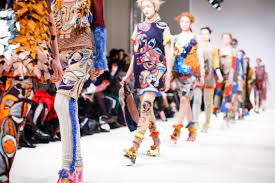In recent years, sustainability has become an increasingly important topic in the fashion industry. From fast fashion to luxury brands, many companies are now working to reduce their environmental impact and create more sustainable products. At the same time, consumers are becoming more conscious of their own impact on the planet and are seeking out brands that align with their values. As a result, the intersection of sustainability and style has become a key trend in the fashion industry.
One of the biggest drivers of this trend is the growing awareness of the environmental impact of fashion. The industry is known for being one of the most polluting in the world, with everything from the production of raw materials to the disposal of clothing contributing to the problem. However, many brands are now working to reduce their environmental footprint through various initiatives such as using eco-friendly materials, reducing waste, and investing in renewable energy.
For example, some brands are using materials such as recycled plastic bottles, organic cotton, and bamboo to create clothing that is both stylish and sustainable. Others are adopting circular business models, where clothing is designed to be recycled or reused instead of being thrown away. This approach not only reduces waste but also helps to create a more circular economy where resources are used more efficiently.
At the same time, there is a growing interest in ethical fashion. This means that brands are not only concerned about the environmental impact of their products but also the social impact. They are working to ensure that workers in their supply chains are treated fairly, paid a living wage, and provided with safe working conditions. This focus on ethics is particularly important in countries where labor laws may be lax, and workers may be exploited.
Another aspect of sustainable fashion is the concept of slow fashion. This means creating high-quality clothing that is designed to last and be worn for years, rather than just a few months. This approach not only reduces waste but also encourages consumers to invest in pieces that they will wear and love for years to come. By prioritizing quality over quantity, slow fashion can help to reduce the overall environmental impact of the fashion industry.
Finally, sustainable fashion is also about transparency. Brands are increasingly providing information about their supply chains, including where their materials come from and how their clothing is made. This allows consumers to make informed choices about the products they buy and encourages brands to be more accountable for their environmental and social impact.
In conclusion, the intersection of sustainability and style is a growing trend in the fashion industry. Brands are working to reduce their environmental impact, create more ethical supply chains, and provide more transparency to consumers. At the same time, consumers are becoming more conscious of their impact on the planet and seeking out brands that align with their values. As this trend continues to grow, we can expect to see more innovative solutions and collaborations that prioritize both style and sustainability.

